Computers come in all sorts of shapes and sizes. You are all familiar desktop PCs and laptops, but did you know that computers can be as small as your mobile phone (in fact your phone is a computer!) and as large as a room?!
Mainframe Computer
A mainframe computer is a large computer, often used by large businesses, in government offices, or by universities.
Mainframe computers are typically:
Mainframe computers are typically:
- Powerful - they can process vast amounts of data, very quickly
- Large - they are often kept in special, air-conditioned rooms
- Multi-user - they allow several users (sometimes hundreds) to use the computer at the same time, connected via remote terminals (screens and keyboards)
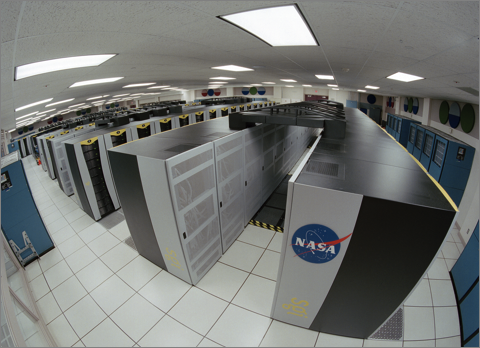
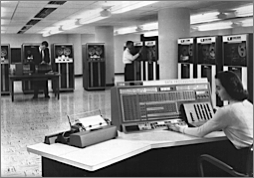
From their invention back in the 1940s until the late 1960s, computers were large, very expensive machines that took up the whole of a room (sometimes several!) These were the only computers available.
The circuit-boards of these computers were attached to large, metal racks or frames. This gave them the nickname 'mainframe' computers.
The circuit-boards of these computers were attached to large, metal racks or frames. This gave them the nickname 'mainframe' computers.
Some of the most powerful mainframe computers can process so much data in such a short time, that they are referred to as 'supercomputers'
Personal Computer (PC)
The early 1980s saw a revolution in computing: The creation of computers that were small enough to fit on a desk, and cheap enough that everyone could have their own, personal computer, instead of having to share access to a mainframe.
These computers came to be known as desktop computers, or personal computers (PCs).
A typical PC contained the same basic components as a mainframe computer (CPU, RAM, storage, etc.) but at a fraction of the size and cost.
These computers came to be known as desktop computers, or personal computers (PCs).
A typical PC contained the same basic components as a mainframe computer (CPU, RAM, storage, etc.) but at a fraction of the size and cost.
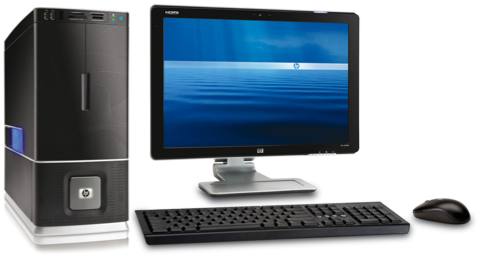

Early PCs were quite unlike the PCs that we all use today:
- Displays were black and white, and only displayed text (no graphics)
- No hard-drives (way too expensive)
- Just a few 100 kB of RAM (not MB or GB!)
- Slow - a typical speed would be 5MHz (not GHz!)
- No mouse (no pointer to move!)
- Light brown case (for some reason every early PC was brown!)
Because PCs were so much smaller than mainframe computers, they were called 'microcomputers' for a while
Laptop Computer
A 'laptop' computer is a light, compact and portable PC.
Laptops contain a rechargeable battery so that they can be used even when not plugged in to a mains power supply. They also have a built-in LCD monitor.
To make them as portable as possible, most laptops try to avoid any sort of cable or wire. Instead of a mouse, a trackpad is used. Instead of a wired connection to a network or printer, 'wireless' radio connections are used.
Laptops contain a rechargeable battery so that they can be used even when not plugged in to a mains power supply. They also have a built-in LCD monitor.
To make them as portable as possible, most laptops try to avoid any sort of cable or wire. Instead of a mouse, a trackpad is used. Instead of a wired connection to a network or printer, 'wireless' radio connections are used.
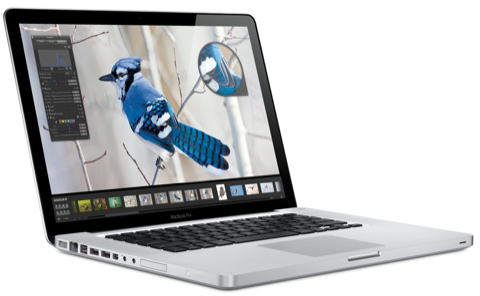
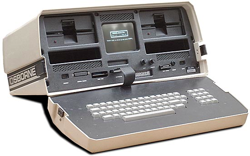
Early portable computers were far from being 'laptops' - you would have crushed your legs if you'd tried to put these beasts on your lap!
Palmtop Computer
A palmtop computer is similar to a laptop computer, but smaller. It's small enough to fit in the palm of your hand (hence the name!)
Palmtops are usually not very powerful since fast CPUs require a large battery and get hot - both problems in a small device.
A typical palmtop have a very small keyboard - too small to type on normally. Instead the user types using both thumbs. Also there is no room for a trackpad, so a touchscreen or tiny joystick is used instead.
Palmtops are extremely portable, but the small keyboard and screen make the devices tiring to use for long periods.
Palmtops are usually not very powerful since fast CPUs require a large battery and get hot - both problems in a small device.
A typical palmtop have a very small keyboard - too small to type on normally. Instead the user types using both thumbs. Also there is no room for a trackpad, so a touchscreen or tiny joystick is used instead.
Palmtops are extremely portable, but the small keyboard and screen make the devices tiring to use for long periods.
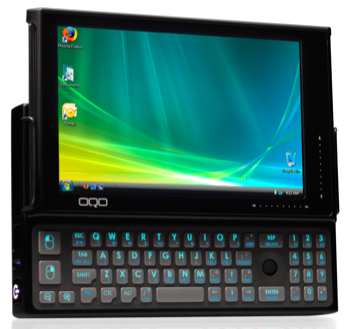
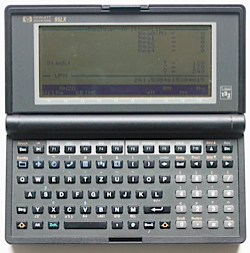
Early palmtop computers were pretty basic by today's standards
Palmtops are often called ultra-mobile PCs (UMPC)
Personal Digital Assistant (PDA)
A PDA is similar to a palmtop computer, except it is even more compact, and typically has no keyboard, using a touchscreen for all data input. Since the screen is so small, many PDAs have a small stylus (plastic stick) that is used to press things on the screen.
Most PDAs use some sort of handwriting-recognition system to allow the user to write on the screen, and have their writing converted into text.
PDAs tend to be used a 'digital diaries' allowing users to take their e-mail, documents, appointments, etc. with them wherever they go.
Note: You never see PDAs any more since modern 'smart' phones can do all of this, and work as a phone too!
Most PDAs use some sort of handwriting-recognition system to allow the user to write on the screen, and have their writing converted into text.
PDAs tend to be used a 'digital diaries' allowing users to take their e-mail, documents, appointments, etc. with them wherever they go.
Note: You never see PDAs any more since modern 'smart' phones can do all of this, and work as a phone too!

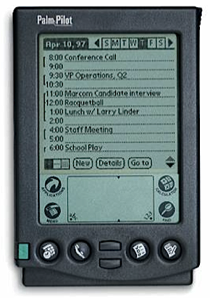
Early PDAs, like early palmtops, were pretty basic. But they were a revolutionary way to take digital data with you on the move.
In the 1990s every business person either had, or wanted one of these!
In the 1990s every business person either had, or wanted one of these!
PDAs are often called Pocket-PCs (for obvious reasons!)
